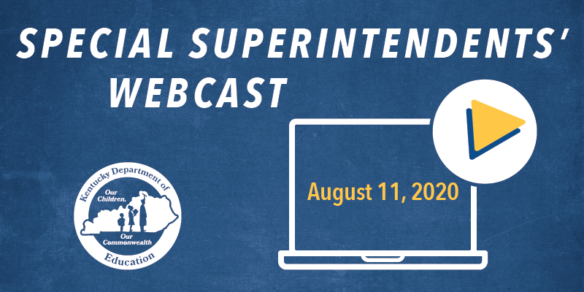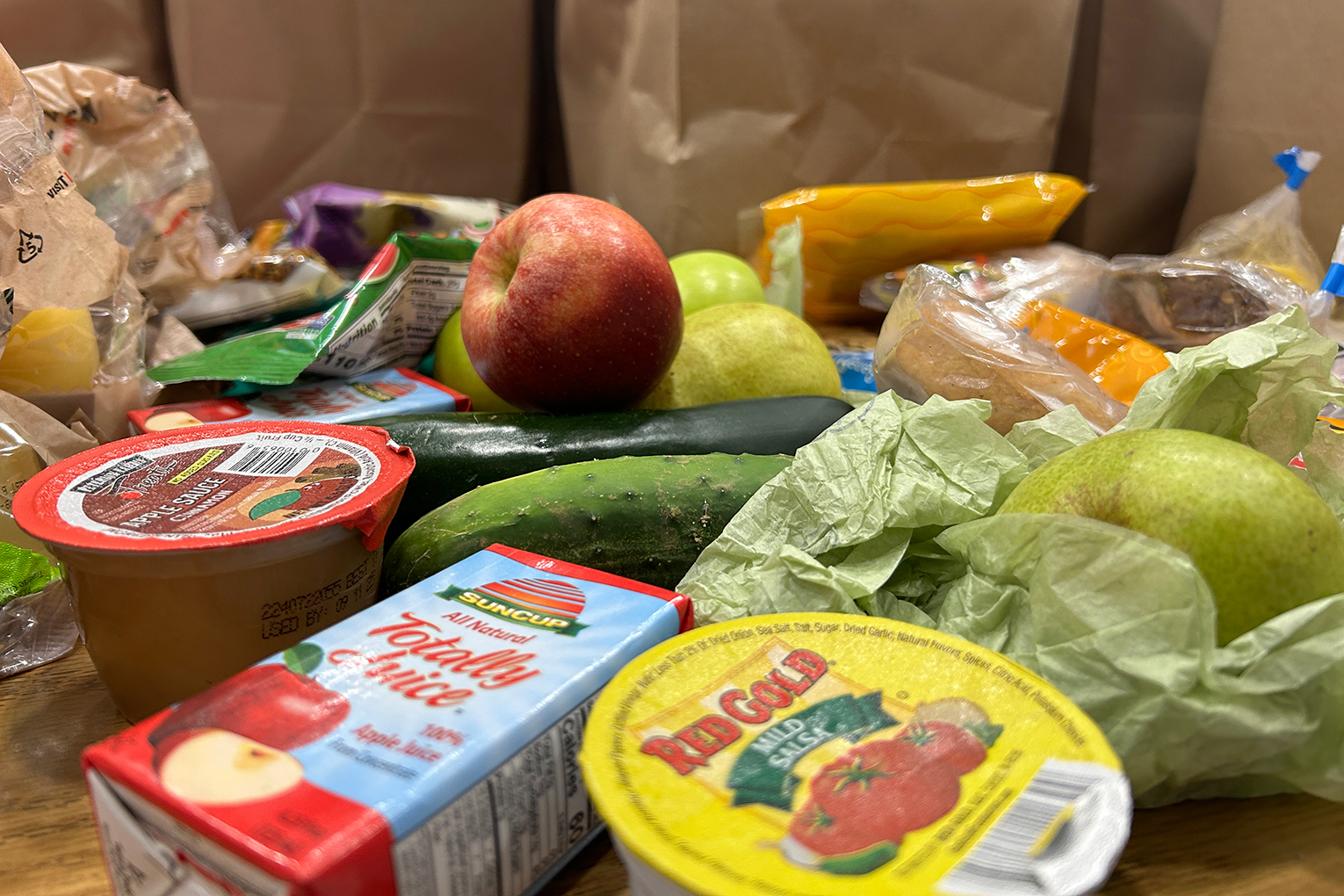
By Jim Gaines
jim.gaines@education.ky.gov
Discussion during the Kentucky Department of Education’s (KDE) Aug. 11 Special Superintendents’ Webcast focused on Gov. Andy Beshear’s recommendation that schools delay holding in-person classes until at least Sept. 28 due to the high rate of COVID-19 in Kentucky.
With the state’s positive test rate above 5% and more children testing positive for the virus, Interim Commissioner of Education Kevin C. Brown said the state doesn’t want to have the same experience as Cherokee County School District in Georgia. Cherokee County reopened schools on Aug. 3, only to shut down again when more than 250 students and staff had to quarantine after multiple positive COVID-19 tests in the first week of classes.
Lt. Gov. Jacqueline Coleman said that as a former teacher and assistant principal, and with a husband who’s also a teacher, she knows starting classes with non-traditional instruction (NTI) is difficult. But Kentucky’s rate of children testing positive for COVID-19 spiked 40% in July, meaning schools need to be as cautious as possible, she said.
“Every decision we’ve made has been based on the health and safety of people in the school buildings,” Coleman said.
Even if schools follow the best health practices, she said, they can’t control what students do outside schools that may expose them to COVID-19.
Coleman warned against falsely equating school attendance with grocery shopping or activity at any other business. Sitting at separated outdoor tables or maintaining personal distance during a short shopping trip does not carry the same risk as sitting in an enclosed classroom for hours or moving through crowded halls, she said.
Every state in the country is dealing with the same issues and is coming to the same conclusions, Coleman said. They are all pushing back school opening dates or only starting classes online, she said.
“This is not just a Kentucky thing. This is not just a Governor Beshear thing,” Coleman said.
A number of superintendents, who said they are under pressure from their communities and school boards, wanted a stronger directive than Beshear’s recommendation. Brown acknowledged that pressure, but said that so far all of Kentucky’s 171 school districts have followed state recommendations voluntarily.
If a district decides to open for in-person classes before Sept. 28, Brown said he’d schedule a group conference call with school leadership to discuss why.
“My goal would be to have a different outcome at the end of the conversation,” he said.
Those schools also would be risking an outbreak, which would force them to close anyway and potentially draw national attention, Brown said.
Schools can allow a few students at a time into buildings to pick up equipment or orientation material, Brown said, and KDE will work with the Department for Public Health (DPH) to provide standards for that.
The goal is to reduce the number of people in school buildings and contact between people, Brown said. That means schools should send home anyone who is able to work remotely, including teachers, he said.
Asked if teachers can bring their own children to work with them, KDE Interim General Counsel Todd Allen said that is a local decision. But if it’s allowed, there should be protocols in place to keep those kids from congregating and ensure they wear masks consistent with Healthy at School guidance, he said.
Other superintendents asked whether athletics can be held while classes are all virtual, and Brown said the Kentucky High School Athletic Association is working on “multiple scenarios” and its board will meet Aug. 20 to discuss the issue.
Due to the nature of career and technical education, state-operated area technology centers (ATCs) will serve students in person if that is allowed, said David Horseman, KDE associate commissioner in the Office of Career and Technical Education. If feeder school districts are closed, their ATC students will be handled virtually.
“We plan to serve the students in whatever capacity their district allows them to and (however) we’re allowed to operate,” he said.
Suicide Prevention Training
Many schools are asking how to hold state-mandated annual suicide prevention training while schools are closed for in-person learning. This year in particular, the training is vital because COVID-19 adds to stress, isolation and fear which may increase suicide risk, said Patti Clark, program manager for prevention and promotion at the Kentucky Department for Behavioral Health, Developmental and Intellectual Disability (DBHDID).
KRS 156.095 requires schools to provide suicide prevention information on an annual basis to all students in grades 6 through 12 either in person, by live streaming or via video recording by Sept. 15.
Nearly 15% of Kentucky middle and high school students feel unsafe at school, which makes them four times as likely to attempt suicide, Clark said. Suicide is among the leading causes of death for young people.
The state recommends keeping with the Sept. 15 deadline, said Beck Whipple, DBHDID Suicide Prevention Coordinator. Schools should establish a clear avenue, including virtually, for students to talk to a trusted adult, he said.
Clark noted that the Society for the Prevention of Teen Suicide offers free online courses at SPTSuniversity.org, including videos aimed at specific age groups, including parents and teachers. The courses address COVID-19-related concerns, with some Kentucky-specific information in the works, she said.
Guidance on Libraries and Class Size
New KDE guidance on library media centers and allowable class sizes for NTI was issued Aug. 10.
The library guidance references KDE’s previous “flagship” guidance but contextualizes it for the largest classroom in many schools, the library media center. This guidance has information on distancing, sanitizing and general operations specific to libraries, said James Allen of the KDE Office of Education Technology.
He pointed out that there are two major partners who can play a major role in library media services. Kentucky Educational Television offers lots of free and high quality content, as does the Kentucky Virtual Library, to which most schools subscribe.
Many school districts also are partnering with their local public libraries, said Marty Park of the KDE Office of Education Technology.
“We would highly recommend that,” he said.
In setting class sizes during NTI, schools with site-based decision-making (SBDM) councils can adjust their policies at the local level, said Kelly Foster, KDE associate commissioner in the Office of Continuous Improvement and Support. The few schools and programs which don’t have SBDMs will need state exemptions to increase class sizes. Foster said those schools and programs can email her to get the necessary form.
MORE INFO …
- Aug. 11 Special Superintendents’ Webcast
- KDE’s COVID-19 webpage
- KDE’s COVID-19 Reopening Guidance webpage
- Kentucky COVID-19 Hotline (800) 722-5725




Leave A Comment